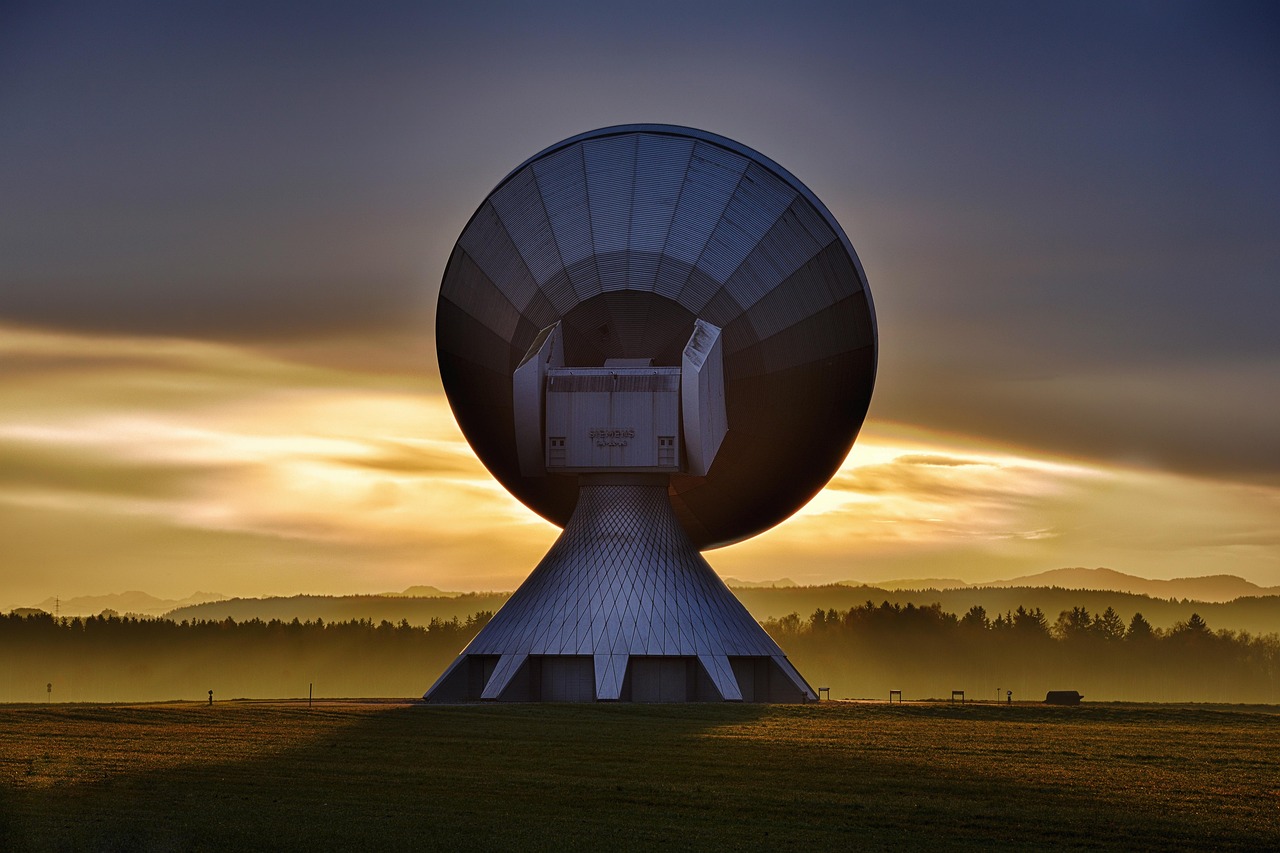Imagine a world where your refrigerator automatically orders groceries when you’re running low, your thermostat adjusts to your preferred temperature before you even arrive home, and your doctor remotely monitors your vital signs, all thanks to interconnected devices seamlessly communicating with each other. This isn’t a futuristic fantasy; it’s the reality enabled by the Internet of Things (IoT), a rapidly evolving technology transforming how we live, work, and interact with the world around us.
What is the Internet of Things (IoT)?
Defining IoT
The Internet of Things (IoT) refers to the network of physical objects—”things”—that are embedded with sensors, software, and other technologies for the purpose of connecting and exchanging data with other devices and systems over the internet. These “things” can range from everyday household objects to sophisticated industrial tools. The core principle is connecting devices to the internet to enable communication, control, and automation. Think of it as a vast, interconnected nervous system for the world.
Key Components of IoT
Understanding the fundamental building blocks of IoT is essential:
- Devices: These are the physical objects with embedded sensors, actuators, and connectivity capabilities. Examples include smartwatches, smart thermostats, industrial sensors, and connected vehicles.
- Connectivity: IoT devices need to connect to the internet (or a local network). This can be achieved through various technologies like Wi-Fi, Bluetooth, cellular networks (4G/5G), and specialized IoT protocols like LoRaWAN and Zigbee.
- Data Processing: The data collected by IoT devices needs to be processed and analyzed. This often occurs in the cloud but can also be done on-device (edge computing). Data processing involves filtering, aggregation, and transformation of raw data into meaningful insights.
- User Interface: This allows users to interact with the IoT system, monitor data, control devices, and receive alerts. User interfaces can be web-based dashboards, mobile apps, or voice assistants.
How IoT Works: A Simple Example
Let’s consider a smart home example:
Benefits of IoT Across Industries
Increased Efficiency and Productivity
IoT enables businesses to optimize operations, reduce costs, and improve productivity:
- Real-time Monitoring: Track assets, equipment, and processes in real-time to identify bottlenecks and inefficiencies. For example, a manufacturing plant can use sensors to monitor machine performance and predict potential failures, minimizing downtime.
- Automation: Automate repetitive tasks and processes to free up human resources for more strategic activities. Think of automated inventory management in warehouses using RFID tags.
- Data-Driven Decision Making: Gain insights from data collected by IoT devices to make informed decisions and improve business strategies. Agriculture benefits significantly from IoT through sensors that monitor soil conditions, weather patterns and can automate irrigation processes.
Enhanced Customer Experience
IoT allows businesses to provide personalized and proactive services, improving customer satisfaction:
- Personalized Recommendations: Use data from IoT devices to tailor products and services to individual customer needs. An example is a smart retail system that analyzes customer browsing habits and offers personalized promotions.
- Predictive Maintenance: Anticipate potential issues and proactively address them before they impact customers. Car manufacturers use IoT to monitor vehicle performance and schedule maintenance appointments proactively.
- Remote Monitoring and Support: Provide remote assistance and troubleshooting, reducing the need for on-site visits. Healthcare utilizes IoT to remotely monitor patient vitals and provide timely interventions.
Improved Safety and Security
IoT can enhance safety and security in various environments:
- Environmental Monitoring: Detect potential hazards like air pollution, gas leaks, and water contamination. Smart cities implement IoT-based air quality sensors to monitor pollution levels and alert residents.
- Access Control: Implement secure access control systems using biometric sensors and smart locks. Industries use IoT devices for monitoring workplace safety by tracking the location of workers in potentially hazardous environments and detecting unsafe conditions like high temperatures or the presence of dangerous gases.
- Emergency Response: Improve emergency response times by using sensors to detect accidents and automatically alert emergency services. Vehicle telematics systems can automatically call for help in the event of a collision.
Common IoT Applications
Smart Homes
Smart homes are one of the most visible applications of IoT:
- Smart Lighting: Control lights remotely, automate lighting schedules, and adjust brightness based on ambient light.
- Smart Thermostats: Optimize energy consumption by automatically adjusting temperature based on occupancy and weather conditions.
- Security Systems: Monitor your home with security cameras, smart locks, and motion detectors.
- Smart Appliances: Control appliances remotely and receive notifications about their status.
Industrial IoT (IIoT)
IIoT focuses on using IoT in industrial settings:
- Predictive Maintenance: Monitor equipment health and predict potential failures to minimize downtime.
- Asset Tracking: Track the location and condition of assets throughout the supply chain.
- Process Optimization: Optimize manufacturing processes by collecting and analyzing data from sensors.
- Remote Monitoring: Remotely monitor and control industrial equipment.
Smart Cities
Smart cities leverage IoT to improve the quality of life for citizens:
- Smart Traffic Management: Optimize traffic flow, reduce congestion, and improve public transportation.
- Smart Parking: Help drivers find available parking spaces quickly and easily.
- Waste Management: Optimize waste collection routes and reduce landfill waste.
- Public Safety: Enhance public safety with surveillance cameras, gunshot detection systems, and emergency response systems.
Healthcare IoT (IoMT)
IoMT improves healthcare delivery and patient outcomes:
- Remote Patient Monitoring: Monitor patients’ vital signs remotely and provide timely interventions.
- Wearable Devices: Track patients’ activity levels, sleep patterns, and other health metrics.
- Smart Pills: Monitor medication adherence and provide feedback to patients and healthcare providers.
- Connected Medical Devices: Improve the efficiency and accuracy of medical procedures.
Challenges and Considerations for IoT Implementation
Security Risks
IoT devices can be vulnerable to cyberattacks:
- Data Breaches: IoT devices collect vast amounts of sensitive data, which can be targeted by hackers.
- Device Hijacking: Hackers can take control of IoT devices and use them for malicious purposes.
- Denial-of-Service Attacks: Hackers can use IoT devices to launch DDoS attacks against websites and networks.
- Mitigation: Implement strong security measures, such as encryption, authentication, and regular security updates.
Privacy Concerns
The collection and use of data by IoT devices raise privacy concerns:
- Data Collection: IoT devices collect a wide range of data about users’ activities, habits, and preferences.
- Data Sharing: Data collected by IoT devices may be shared with third parties without users’ consent.
- Data Retention: Data collected by IoT devices may be retained for extended periods of time.
- Mitigation: Be transparent about data collection practices, obtain user consent, and implement data privacy policies.
Interoperability Issues
Different IoT devices and platforms may not be compatible:
- Lack of Standards: The lack of universal standards can make it difficult to integrate different IoT devices and platforms.
- Proprietary Protocols: Some IoT devices use proprietary protocols, which can limit interoperability.
- Data Silos: Data collected by different IoT devices may be stored in separate silos, making it difficult to analyze and share data.
- Mitigation: Advocate for open standards, use interoperable protocols, and implement data integration solutions.
Scalability Challenges
Managing a large number of IoT devices can be challenging:
- Network Capacity: A large number of IoT devices can strain network capacity.
- Data Storage: Storing and processing the data generated by a large number of IoT devices requires significant resources.
- Device Management: Managing and maintaining a large number of IoT devices can be complex.
- Mitigation: Use scalable network infrastructure, cloud-based data storage, and automated device management tools.
Conclusion
The Internet of Things is revolutionizing various aspects of our lives, from enhancing efficiency and productivity in industries to improving our comfort and convenience at home. While there are challenges to overcome, the benefits of IoT are undeniable. By understanding the key components, applications, and considerations discussed in this post, businesses and individuals can harness the power of IoT to unlock new opportunities and drive innovation. Embracing IoT responsibly and strategically is key to shaping a more connected, efficient, and intelligent future.




